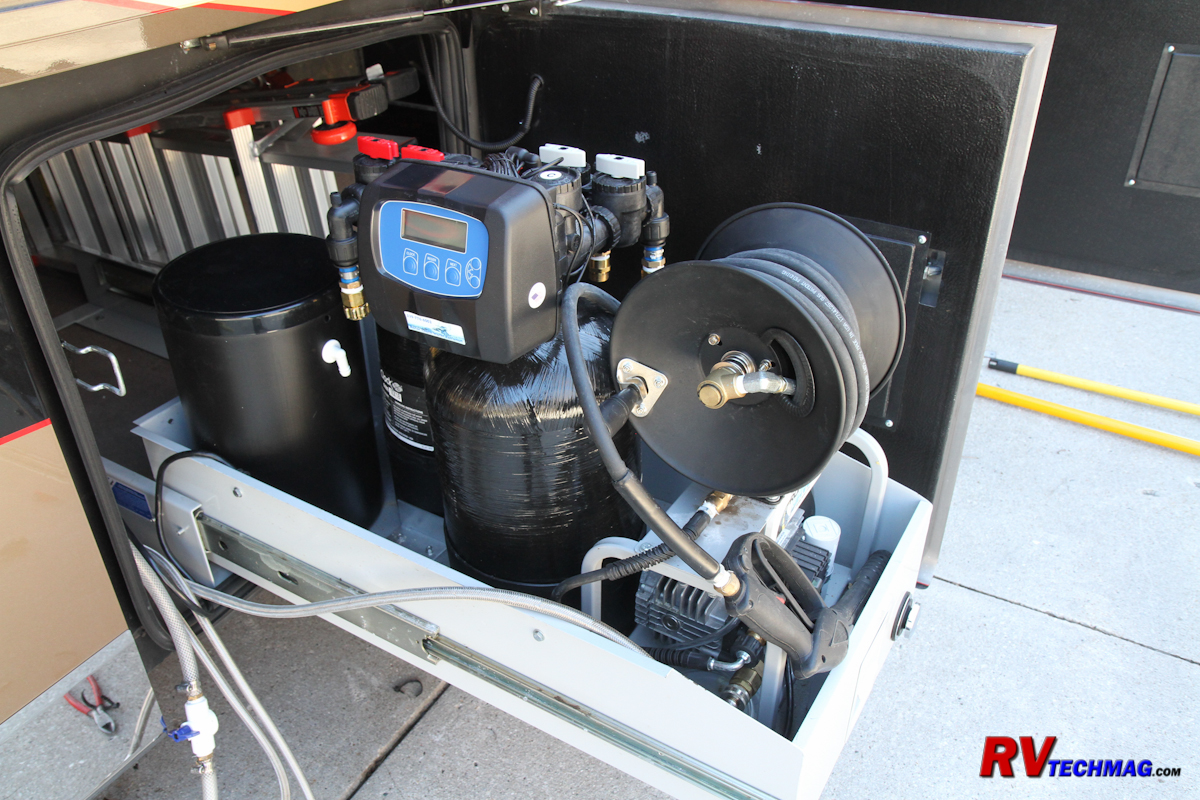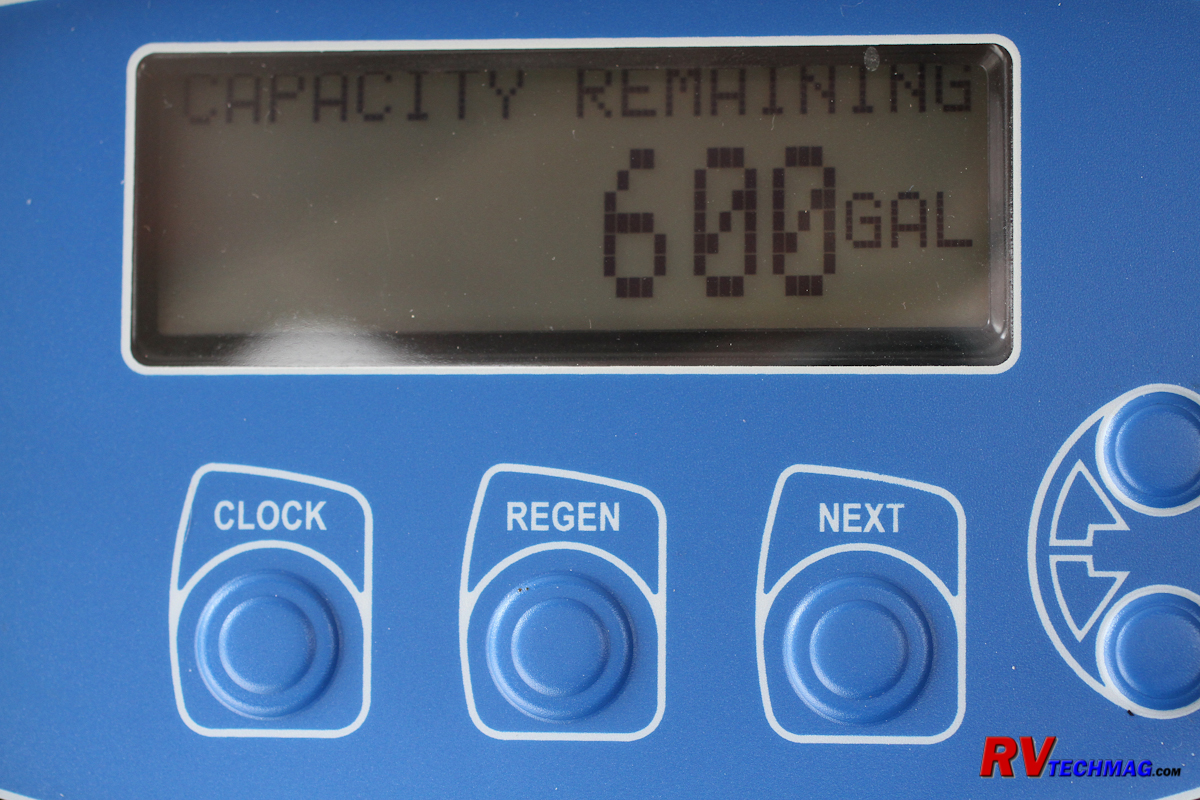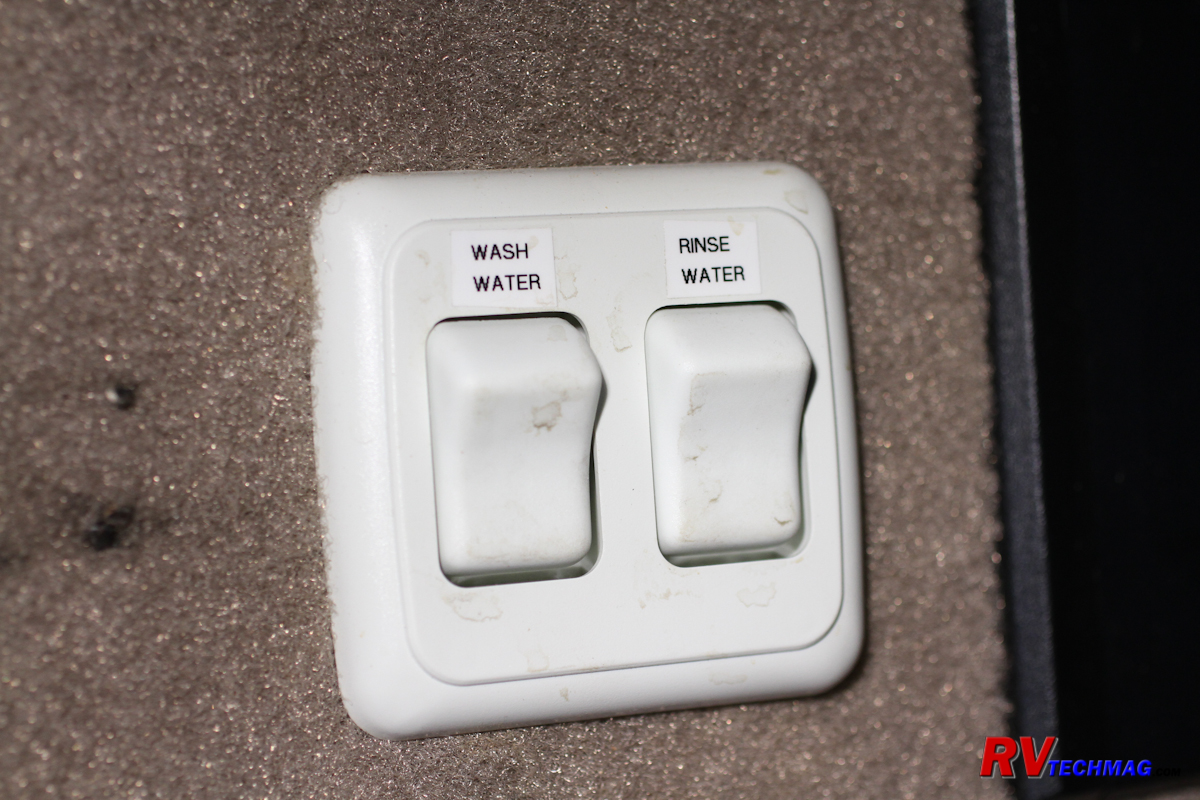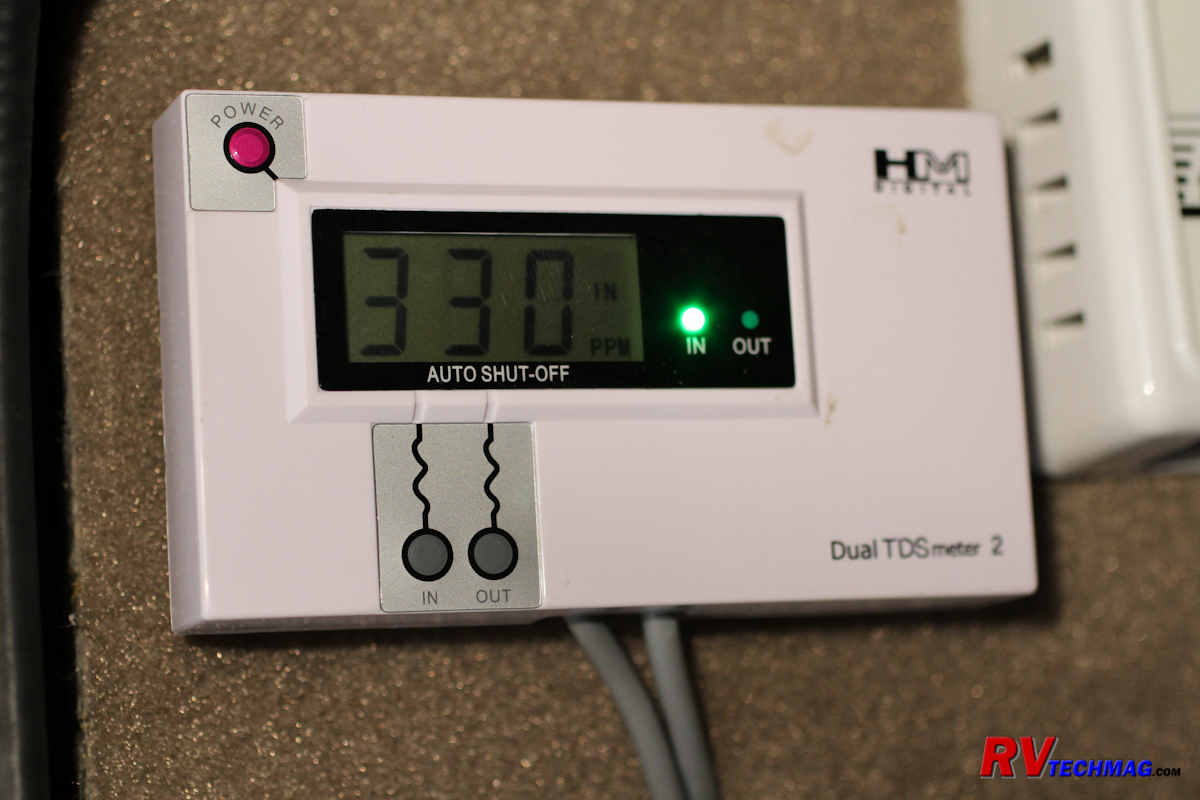RV Water Softener and Deionizer
Installing an Automated Water Softener and Deionizer in an RV
Article Date: August, 2017
Article and Photography by Mark Quasius

Operating the Softener
The heart of the water softener is its controller. The controller is programmed with the
expected hardness of the water supply and the
time of day. It then counts how many gallons of water are being passed, which varies according to how hard your water is and deducts from the "gallons remaining"
counter. When the gallons remaining reaches zero, the controller will initiate a
regeneration cycle. The actual time for this to occur is pre-programmed by the
user. I chose the default 2:00 AM setting so that it would happen while we slept. When the regeneration cycle starts it begins by backwashing the softener to
clean up the resin media. It then draws in the salt brine from the brine tank and
allows the brine to soak into the resin to remove the hard water ions that
have coated the media and replenish it with sodium ions. Finally a rinse is performed and some more water is added to the brine tank so that it can make more
brine solution for the next time.
In a mobile environment such as an RV you won't have consistent water hardness from place to place as you travel. In that case it may
be necessary to regenerate more frequently if you encounter harder water than usual. Rather than reprogram the softener's controller each time you fan initiate a
manual regeneration from the control panel. Simply press and hold the Regen button to tell the controller to regenerate the softener at the usual time that night
or press twice to initiate an immediate regeneration. This is also a handy feature if your gallons remaining isn't all that low but you plan on dry camping for
a few days where a fresh water supply is not available. This allows you to conserve your fresh water supply during that time by not having to worry about an
impending regeneration that would use water.

The water softener control features an easy to read LCD display
Summary
This system has proven to be a great investment. Our manually regenerating softener required a good hour of downtime while the water
could not be used during the regeneration process. The manual regeneration method also wasn't as efficient as the automatic method. It required significantly
more water to regenerate and the regeneration wasn't as thorough as this automated unit. The regeneration process is quite, although part of that is due to the
excellent insulation in an Entegra Coach, and we don't even hear it happening during the evening. The brine tank holds lots of solar salt which means you can go
a long time until you have to replenish and handle the salt. Overall, minimal effort is required to maintain the system and it's almost an "install it
and forget about it" system, except for adding salt.
The deionizer is another great improvement. The RoadWave pressure washer does a great job of washing the coach and removing bugs. But
hard water can leave water spots when it dries and trying to dry a 45' long coach that is 13' high means you can't possibly work fast enough to get them all
before it's too late. Deionized water is like those spot-free rinse sessions in the car wash. But the media is a deionizer does need to eventually be replenished
every now and then so it's not recommended to use it while washing but to save it for the final rinse. Many deionizer owners add a series of ball valves so that they
can bypass the deionizer when washing. I wanted to simplify this so I added a pair of 12 volt solenoid valves to accomplish this. I added a pair of rocker switches
to the basement wall panel by the pressure washer so I an select either softened wash water or softened and deionized rinse water with the touch of a button. I
also added a dual probe Total Dissolved Solids (TDS) meter to measure the TDS of the incoming water and the deionzer's output water so that I can tell when the
media needs to be replaced.
|

A pair of rocker switches selects the water supply to the deionizer
|

A TDS meter was added to check the condition of the deionizer media
|
Everything fits nicely into the cargo slide tray, which contains any water spills that might occur if I get sloppy and it's easy to add salt
to the brine tank or access the equipment by simply extending the tray. The pressure washer and hose reel are still at the very front of the tray so washing the
coach doesn't require pulling the tray out and the basement door can be left closed while in operation. I was able to retain my iron filter by relocating it to
an area between the main cargo slide trays and I can easily access he manual control lever to regenerate it. The iron filter dos not require salt or any
chemicals but uses air to oxidize any iron so I just need to reach the lever to operate it. All in all it's a great system.

Source
Motor Coach Water Filtration
(239)776-6002
www.motorcoachwaterfiltration.com
Return to Home Page
If you enjoyed this article be sure to recommend RVtechMag.com to your friends, like us on Facebook or Twitter
or subscribe to our RSS feed.



|









